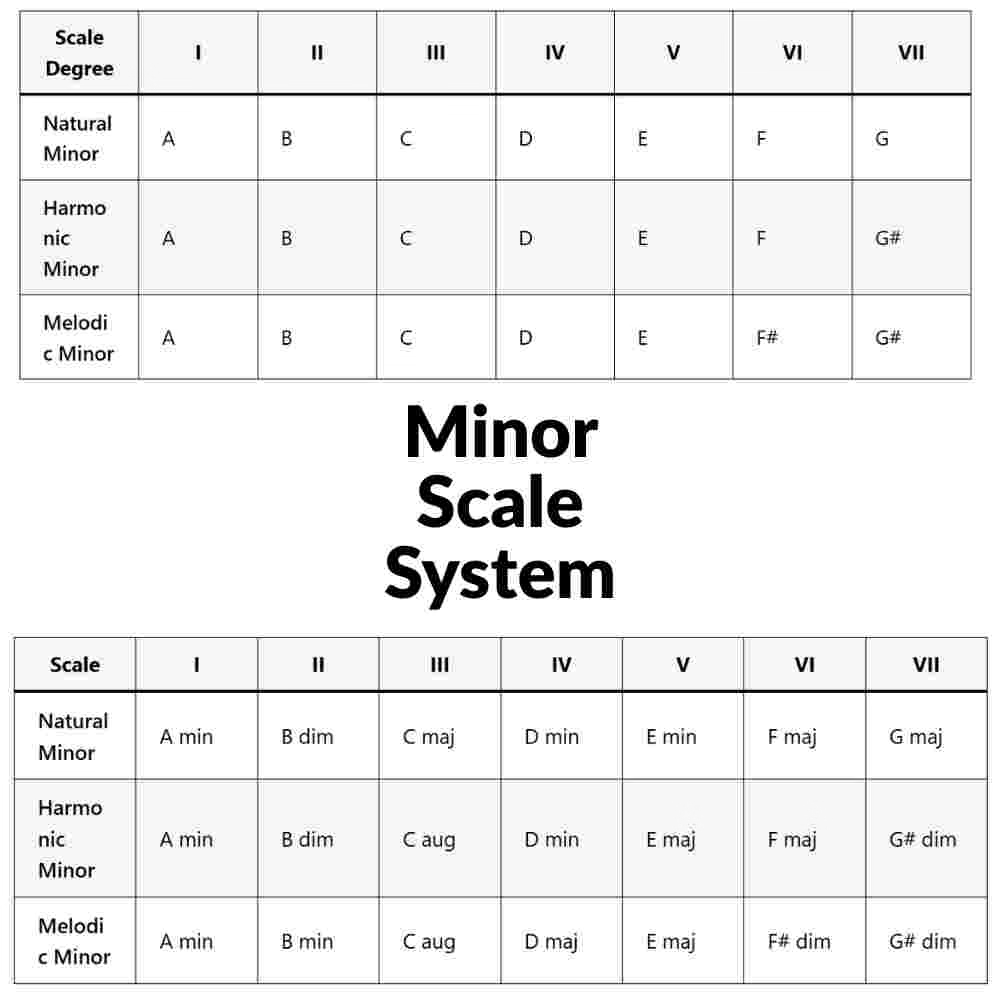The Minor Scale System is the second most important foundation in music theory, right after the major scale. The Minor Scale is built from the 6th degree of the Major Scale and is also known as the Natural Minor Scale or the Aeolian Mode. It serves as the basis for two other related scales — the Harmonic Minor and the Melodic Minor — each adding its own unique color and tension to musical progressions.
Comparing the Scales
The Harmonic Minor Scale is identical to the Natural Minor except for a raised 7th degree.
The Melodic Minor Scale raises both the 6th and 7th degrees.
Here’s an example using A Minor:
| Scale Degree | I | II | III | IV | V | VI | VII |
|---|---|---|---|---|---|---|---|
| Natural Minor | A | B | C | D | E | F | G |
| Harmonic Minor | A | B | C | D | E | F | G# |
| Melodic Minor | A | B | C | D | E | F# | G# |
Chords Built from Each Scale
| Scale | I | II | III | IV | V | VI | VII |
|---|---|---|---|---|---|---|---|
| Natural Minor | A min | B dim | C maj | D min | E min | F maj | G maj |
| Harmonic Minor | A min | B dim | C aug | D min | E maj | F maj | G# dim |
| Melodic Minor | A min | B min | C aug | D maj | E maj | F# dim | G# dim |
Each variation slightly changes the harmonic flavor, giving you different moods and chord options.
Seventh Chords
| Scale | I | II | III | IV | V | VI | VII |
|---|---|---|---|---|---|---|---|
| Natural Minor | A min7 | B min7♭5 | C maj7 | D min7 | E min7 | F maj7 | G7 |
| Harmonic Minor | A min/maj7 | B min7♭5 | C maj7#5 | D min7 | E7 | F maj7 | G# dim7 |
| Melodic Minor | A min/maj7 | B min7 | C maj7#5 | D7 | E7 | F# min7♭5 | G# min7♭5 |
Legend:
- maj = Major
- min = Minor
- dim = Diminished
- aug = Augmented
Applying the Minor System
You can use these scales and chords in progressions just like you do with major keys.
For example:
- Natural Minor: I–IV–V → A minor – D minor – E minor
- Harmonic Minor: I–IV–V → A min/maj7 – D min7 – E7
When practicing, start with the Aeolian mode you already know. To learn the Harmonic or Melodic Minor, simply raise the notes that change — it’s far easier than memorizing new patterns. Writing them out by hand helps reinforce them in memory.
Also check:
